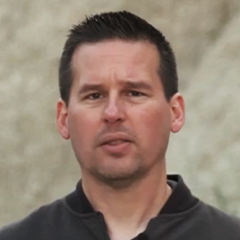
Photographing with Natural Light at the Falklands Islands
Ian PlantPhotographing with natural light might seem easy. Point and shoot. In this video, professional wildlife photographers Ian Plant and Zac Mills take you to the Falkland Islands to cover what you need to know about photographing with natural light. You will learn to accommodate two main variables. First, the intensity of light caused by high sunlight or overcast skies, and second, the light’s direction such as front, side, and back lighting.
Zac gives you tips on front lighting, how it falls on the subject and heightens the colors and textures. Ian prefers backlighting for drama. There are three issues to consider with backlighting. First, when to use auto focus versus manual focus. Second, how to determine the correct exposure to capture the halo of light around the subject. Third, deciding on appropriate backgrounds. Ian likes a dark background to make the subject pop out in the image. He also recommends paying attention to the long shadows which create interesting compositions. He demonstrates these tips as he photographs penguins in the diffusion of drifting sand and backlighted by the setting sun.
What about photographing with natural light in bad weather? In the Falkland Islands, Ian and Zac encounter cold, wind, and rain, causing flat gray light. But Ian looks at this weather as an opportunity to make creative images. From a low perspective, he shoots king penguins, and includes the foreground of blowing sand and the background of big ocean waves. Another consideration in photographing with natural light is the use of reflections. The king penguins create reflections by walking the beach over a thin sheet of ocean water. To get the best reflection in these kind of scenes, Ian suggests shooting at a low perspective while making sure the surface for your subject is smooth and clean to avoid impediments. Photographing with natural light can rewarding if you know what you’re doing.
See all videos in our Wildlife Photography in the Falklands Course:
- Wildlife Photography in the Falklands - Course Preview
- Choosing the Right Equipment for Wildlife Photography
- Photographing with Natural Light at the Falklands Islands
- Discovering Wildlife Composition in the Falklands
- Wildlife Photography in the Falklands - Course Wrap-Up

